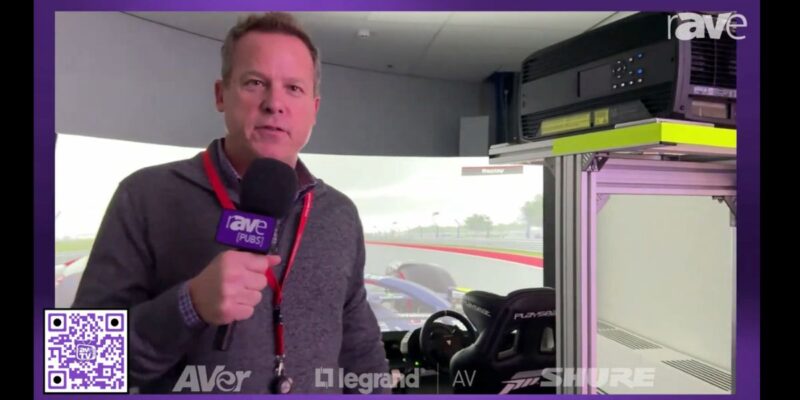Beyond the Digital Conversion: Shaping the Cinema of the Future
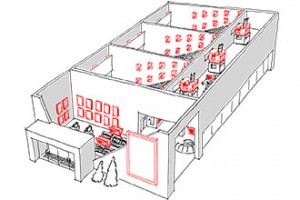 The digital cinema conversion has progressed at high speed, and as of May 2013, is already more than 70 percent completed globally, with some countries fully digitized, and many others approaching full digitization. Exhibitors are turning their attention more and more towards reaping the full benefits that digital cinema has to offer.
The digital cinema conversion has progressed at high speed, and as of May 2013, is already more than 70 percent completed globally, with some countries fully digitized, and many others approaching full digitization. Exhibitors are turning their attention more and more towards reaping the full benefits that digital cinema has to offer.
It’s an exciting time to be in the cinema exhibition industry! Let’s explore some of the new business opportunities that digital cinema can offer exhibitors and the technologies that enable them.
Unlocking new opportunities for growth
Becoming more audience-centric is key. We are already dealing with the ‘Net Generation and the iGeneration, who think differently about how they interact with each other, and with the entertainment industry. Audiences increasingly demand choice in where, when and how they consume content. If we can combine the right content with the right experience for the right audience, we can create a lot of value for that audience, and give them a compelling reason to visit the cinema more often to experience the content that they love most. Understanding your customers and potential customers is paramount in this new audience-centric exhibition model, as is the ability to adapt programming in a flexible way. Digital cinema has liberated the industry from the 35 mm straitjacket, which was not flexible and cost-effective enough to achieve this.
If we complement digital cinema with other unique cinema assets such as infrastructure (audio, video, parking, catering, etc.) and location (most of the world population is within striking distance of a cinema), we can open up even more new opportunities. This includes entertainment applications beyond the traditional feature film business model, such as additional content, but also new non-entertainment opportunities such as B2B, educational and innovative advertising applications.
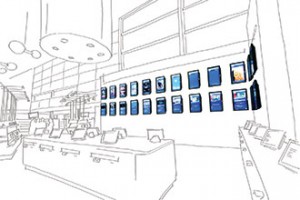 B2B applications in particular offer new opportunities, such as business meetings, conferences and more specialized applications such as customer focus groups. On the educational front, we could be looking at enhanced lectures, interactive remote learning and more immersive educational experiences.
B2B applications in particular offer new opportunities, such as business meetings, conferences and more specialized applications such as customer focus groups. On the educational front, we could be looking at enhanced lectures, interactive remote learning and more immersive educational experiences.
Where advertising is concerned, the digital world offers us many new opportunities, exploiting the potential of digital screens and advertising panels, and enabling more integrated, innovative advertising campaigns throughout the cinema ecosystem. Some of these things have been attempted, but by and large, we have only been scratching the surface. In addition, from a technology perspective, it has been challenging to implement this in a cost-effective and scalable way.
Given that the occupancy rate of most cinemas does not exceed 20 percent, these new applications represent significant revenue growth opportunities for exhibitors. The large-screen, immersive experience that only the cinema can offer remains a key differentiator. In what follows, we take a closer look at some of the technology enablers for this cinema of the future.
Technology enablers
The large-screen, immersive experience
Historically, audiences have been drawn to the cinema by the large-screen movie experience. Since few of us have room at home to project an 80-foot image and share it with 500 of our closest friends, this large-screen experience will remain central to the cinema of the future — but it will need to be taken to the next level, and as discussed previously, cinema will no longer be just about entertainment.
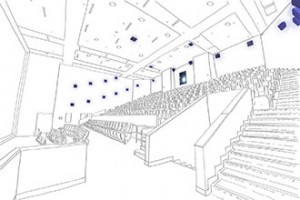 Creating a premium immersive experience is key. In the large-screen environment that is so typical for cinema, image (projection) quality is a critical aspect of that, and many image quality parameters have an impact. 4K, for example, has received a lot of attention the past few years — the fact that resolution is higher when you have four times as many pixels available is undeniable. But it’s important to understand that resolution is only one piece of the image quality puzzle.
Creating a premium immersive experience is key. In the large-screen environment that is so typical for cinema, image (projection) quality is a critical aspect of that, and many image quality parameters have an impact. 4K, for example, has received a lot of attention the past few years — the fact that resolution is higher when you have four times as many pixels available is undeniable. But it’s important to understand that resolution is only one piece of the image quality puzzle.
In the darkened environment of a cinema auditorium, for example, the human eye is much more sensitive to contrast (“true black”) and color (deep saturation). Furthermore, in a set-up where content is moving across a large screen and your head is moving to follow the on-screen action, high temporal resolution (High Frame Rates) is crucial. Consequently, some people call high frame rates (HFR) the future of cinema. Like resolution, however, HFR is just one of the building blocks. And, of course, let’s not forget brightness, brightness, brightness — as the recent controversy over dark 3D images amply demonstrated. Laser illumination, the next evolution in projector technology, will enable further enhancements in image quality.
Sound all around
After image quality, the next logical element in creating that premium, immersive experience is sound. In contrast to the digital cinema revolution in the visual experience, cinema audio has evolved very slowly. In fact, other than adding a few more speakers to surround the audience with sound, the past 20 years or so have not really brought any significant innovations that can take us to the next level in cinema audio.
Fortunately, 3D audio — the next logical step toward the ultimate immersive cinema experience — is now set to change all of this. People feel connected with the environment through sound — and the more natural the sound, the closer the connection. Audio in 3D can deliver this by expanding the 2D plane of surround sound into fully natural 3D sound reproduction — making the whole experience more natural, and thus immersive.
A crucial step in realizing 3D audio in the cinema is finding a format that is compatible with the well-developed audio ecosystem in movie-making and cinema exhibition. From capturing the audio on the set, to mixing the audio in the studio, to playing back the audio in the theater. Studios and exhibitors are hesitant to support a technological revolution unless it provides the safety net of backward compatibility, particularly when there’s the possibility of a format war. These concerns were made explicit by the National Association of Theatre Owners (NATO) and the Union Internationale des Cinemas (UNIC) in their recent statement announcing cinema exhibitor requirements for immersive sound technologies. The goal is to enable theater owners to present movies on any new 3D audio format designed according to the open standard. Barco, Auro Technologies, DTS and other industry participants are working on standards-setting activities to help define and deliver both channel- and object-based audio to cinemas, benefiting content creators, sound engineers and movie exhibitors.
Beyond the cinema auditorium
But it doesn’t stop with the immersive large-screen experience. The above-mentioned Net Generation and iGeneration expect to be informed, connected and entertained 24/7, and they have many things that are competing for their attention. The cinema experience needs to start the moment they arrive. Why not expand the cinema experience to new locations (parking lot, lobby, theater bar, corridors) and times (pre-show, post-show, weekday, morning, evening)?
Digital signage technology is a great enabler to create this extended experience to entertain and inform your audience. Other technologies such as projection mapping and LED display solutions can further extend the digital canvas in the cinema, bringing to life the walls and even the entire building! But it doesn’t stop there: The massive success of smartphones means that the majority of your audience is now walking into your building with their own device, i.e., a connected (accessible) screen, which can also become part of the cinema experience.
These technologies also offer significant opportunities for the B2B, Educational and Advertising applications discussed earlier.
Enabling B2B and educational opportunities
Proactively targeting business and educational applications is a great opportunity for exhibitors to monetize spare capacity. Even straightforward business or educational presentations can be challenging however, requiring extra people, unsightly cabling or in extreme cases, even an extra projector in the auditorium to get the right presentations and images on screen in the right format.
This is where solutions like Barco’s new ClickShare come in. ClickShare enables presenters to click and wirelessly transmit their desktop to the cinema screen in optimal resolution, regardless of whether they are using Windows or iOS. Different presenters can have their images and presentations on screen at the same time. This allows exhibitors to offer their B2B customers a new level of flexibility and quality. And that’s only the beginning. Adding interaction into the mix and using the digital canvas mentioned above offers many more opportunities for B2B and educational applications in particular.
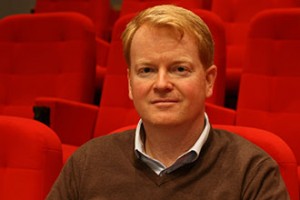 Towards a bright future for the cinema exhibition industry
Towards a bright future for the cinema exhibition industry
It’s clear that digital cinema has opened the door to exciting new opportunities for exhibitors to significantly grow and enhance their business. The digital cinema revolution is only just beginning.
Tim Sinnaeve is the market director, digital cinema for Barco Digital Cinema. He is responsible for strategic marketing and the development of the company’s digital cinema strategy. Previously, Tim worked at SAS Institute, where he was responsible for Western Australia. Tim holds a master’s degree in Applied Linguistics from Erasmus University College, Brussels, and a master’s degree in International Law & Politics from the University of Hull (UK). He is also a board member of the European Digital Cinema Forum (EDCF).




